 |
 |
 |
| |
ART Interruptions Increase Cardiovascular Disease Risk by 57% in SMART Study
|
| |
| |
"Interruption of ART & Risk of Cardiovascular Disease: findings from SMART"
Reported by Jules Levin
CROI, Feb 2007
Andrew Phillips reported these results at CROI. SMART enrolled 5400 patients with CD4> 350. 84% on ART, 11% ART-experienced but off ART, 5% ART naive. Patients were randomized to:
Viral suppression (VS), continuous ART
Or
Drug conservation (DC)
--interrupt or stay off ART when CD4 >350
--initiate or re-initiate ART when CD4 <250
In Jan 2006, the DC strategy was stopped due to raised risk in DC arm of the primary endpoint of opportunistic disease or death.
Risk of cardiovascular disease was an important secondary endpoint in SMART—they hypothesized that risk would be lower in the DC arm.
Lipid levels were measured at baseline and annually, which allows study of changes after ART interruption.
They conducted a series of exploratory analyses to assess the effect of treatment arm on risk of CVD events and lipids. There are relatively low numbers of events.
AUTHOR Summary and conclusions
There was a marginally statistically significant raised risk of major CVD events in the DC arm compared with the VS arm, which remained consistent when using expanded CVD endpoint definitions.
There was no consistent evidence suggesting that interruption and the consequent increase in HIV RNA level or decrease in CD4 count immediately increases risk of CVD because:
--the raised risk for DC compared to VS patients was strongest in those off ART at baseline
--being off ART during followup was not associated with raised risk of CVD in the DC arm
--there was no association between higher current HIV RNA level or lower current CD4 count and risk of CVD in the DC arm.
On balance lipid changes were more unfavorable in DC than VS patients, particularly in those on NNRTI regimens at baseline, and this may offer a partial explanation for the observed excess risk.
These data suggest that ART should not be stopped or avoided because of perceived CVD risk.

Main Findings
Risk of Major CVD Events by Treatment Arm
The DC arm (interrupters) experienced a higher rate of CVD events than the DC group (48 vs 31 events). The relative hazard was 1.57 (1.00-2.46; p=0.05), there was a 57% greater risk in DC arm. The result was of borderline statistical significance. Perhaps with a longer followup than 4 yrs in this study would result in greater CVD risk.
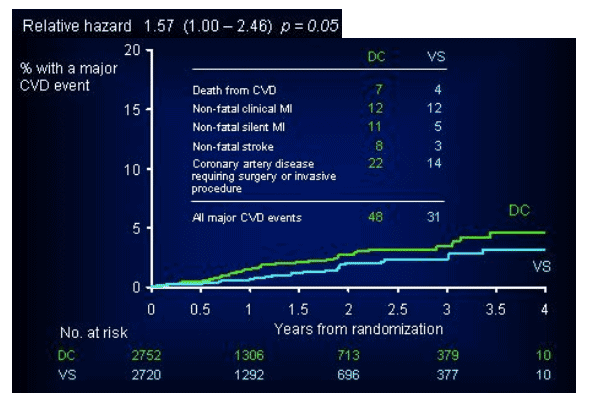
Relative Hazard (DC/VS) of CVD Events According to Baseline ART
Patients not on therapy at baseline had hazard ratio was the largest, 4.41. p-value is 0.16 so there is no statistically significant evidence that these evidence relative hazards are different from each other.
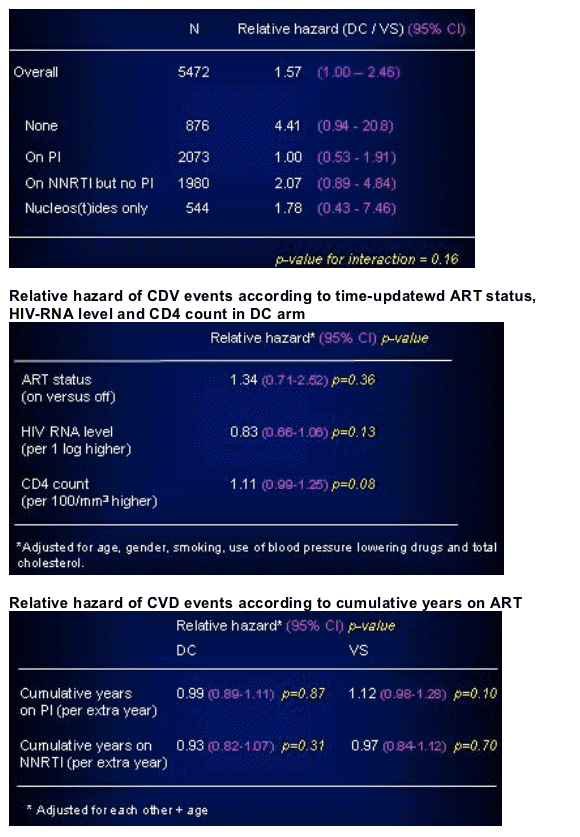
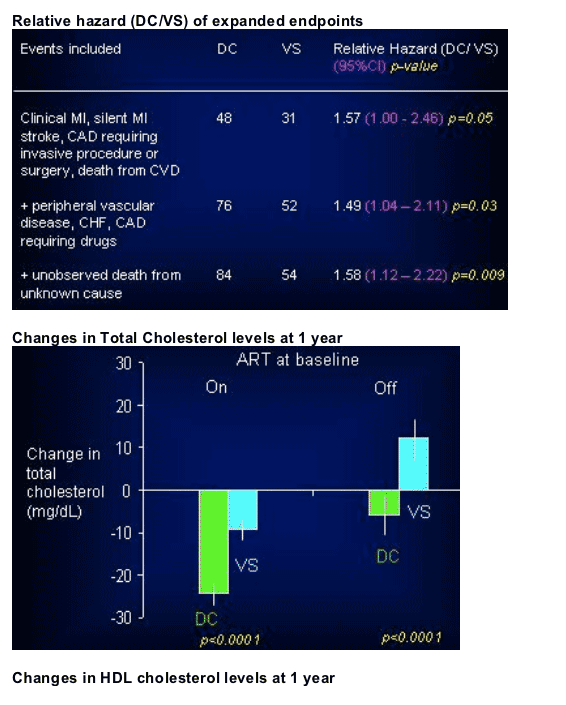
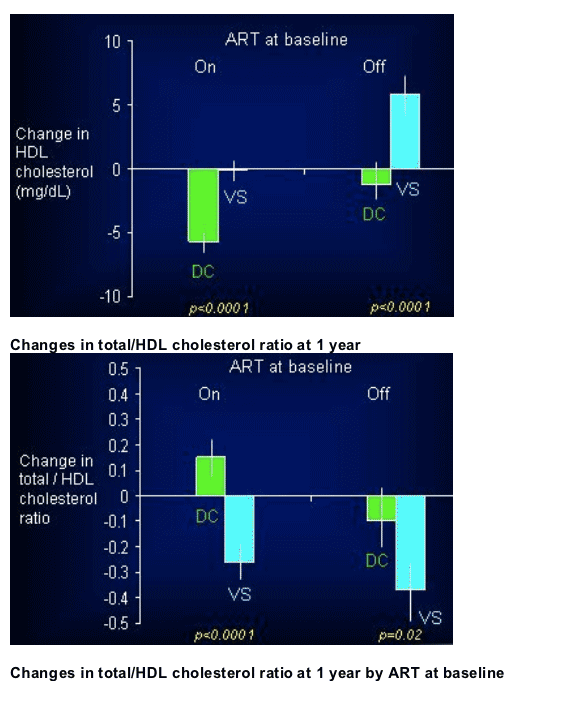
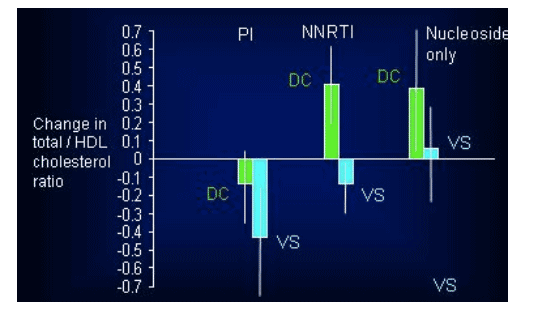
|
| |
|
 |
 |
|
|